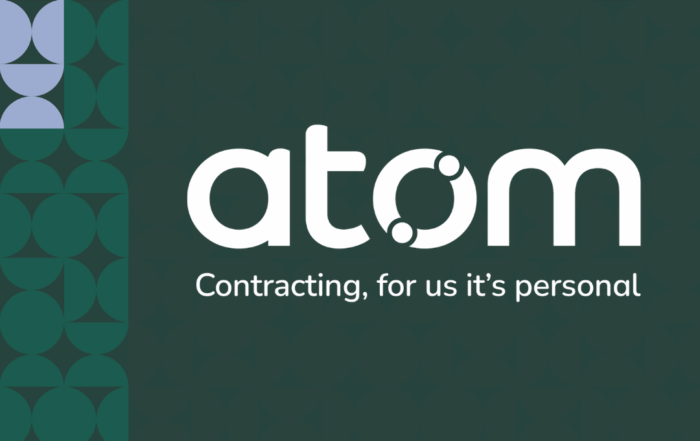Staying Compliant in 2025: Key CIS Updates and How to Prepare
As the construction industry powers through 2025, staying on top of Construction Industry Scheme (CIS) changes has never been more important. With HMRC tightening compliance and digital processes becoming the norm, contractors and subcontractors alike need to stay informed, prepared, and proactive.
In this blog, we’ll break down the latest CIS updates for 2025, what they mean for your business, and how you can stay compliant without the stress.
🔍 A Quick Refresher: What is CIS?
The Construction Industry Scheme (CIS) is a tax scheme introduced by HMRC to regulate payments from contractors to subcontractors. Under CIS:
-
Contractors deduct money from a subcontractor’s pay
-
These deductions go to HMRC as advance payments toward tax
-
Monthly CIS returns must be filed accurately and on time
Getting it wrong can lead to penalties, investigations, and cash flow problems — so compliance isn’t optional.
✅ Key CIS Updates in 2025
Here are the major CIS changes and compliance trends shaping 2025:
1. Stricter Digital Filing Requirements
HMRC has doubled down on its Making Tax Digital (MTD) initiative, and CIS returns are now expected to be filed digitally by default — even for smaller contractors. Manual or paper submissions are being phased out.
What to do:
-
Switch to HMRC-recognised CIS payroll software
-
Ensure your records are stored securely and digitally
-
Train staff on digital processes if needed
2. Increased Subcontractor Verification Checks
There’s a renewed focus on tackling false self-employment and tax avoidance. HMRC has stepped up audits and subcontractor status checks, particularly in high-risk sectors and regions.
What to do:
-
Always verify each subcontractor with HMRC before making payments
-
Keep clear records of employment status assessments
-
Seek guidance if unsure whether someone should be treated as employed or self-employed
3. Real-Time Penalty Enforcement
Late submissions, incorrect filings, or missed payments are now triggering automated penalties much faster. HMRC’s systems flag issues in real-time and can issue fines without manual review.
What to do:
-
Set up internal reminders for CIS deadlines (monthly returns due by the 19th)
-
Review all submissions for accuracy
-
Work with a payroll provider or accountant to double-check compliance
4. More Pressure on Gross Payment Status Holders
HMRC is cracking down on subcontractors with Gross Payment Status (GPS) who fall behind on tax obligations. One missed return or late payment can now jeopardise your GPS.
What to do:
-
Stay up to date with ALL tax obligations (not just CIS-related)
-
Regularly review HMRC correspondence
-
Consider outsourcing tax admin to avoid accidental non-compliance
5. Increased Scrutiny on VAT and Domestic Reverse Charge Compliance
Although not new in 2025, VAT Domestic Reverse Charge rules remain an area of confusion — and HMRC is now actively checking for misapplication within CIS returns.
What to do:
-
Ensure your invoicing follows reverse charge rules (no VAT charged on labour and materials if conditions apply)
-
Train your accounts team or use expert CIS payroll support
-
Review your VAT returns alongside CIS filings for consistency
Atom
Staying Compliant in 2025: Key CIS Updates and How to Prepare
As the construction industry powers through 2025, staying on top of Construction Industry Scheme (CIS) changes has never been more important. With HMRC tightening compliance and digital processes becoming the norm, contractors and subcontractors alike need to stay informed, prepared, and proactive.
In this blog, we’ll break down the latest CIS updates for 2025, what they mean for your business, and how you can stay compliant without the stress.
🔍 A Quick Refresher: What is CIS?
The Construction Industry Scheme (CIS) is a tax scheme introduced by HMRC to regulate payments from contractors to subcontractors. Under CIS:
-
Contractors deduct money from a subcontractor’s pay
-
These deductions go to HMRC as advance payments toward tax
-
Monthly CIS returns must be filed accurately and on time
Getting it wrong can lead to penalties, investigations, and cash flow problems — so compliance isn’t optional.
✅ Key CIS Updates in 2025
Here are the major CIS changes and compliance trends shaping 2025:
1. Stricter Digital Filing Requirements
HMRC has doubled down on its Making Tax Digital (MTD) initiative, and CIS returns are now expected to be filed digitally by default — even for smaller contractors. Manual or paper submissions are being phased out.
What to do:
-
Switch to HMRC-recognised CIS payroll software
-
Ensure your records are stored securely and digitally
-
Train staff on digital processes if needed
2. Increased Subcontractor Verification Checks
There’s a renewed focus on tackling false self-employment and tax avoidance. HMRC has stepped up audits and subcontractor status checks, particularly in high-risk sectors and regions.
What to do:
-
Always verify each subcontractor with HMRC before making payments
-
Keep clear records of employment status assessments
-
Seek guidance if unsure whether someone should be treated as employed or self-employed
3. Real-Time Penalty Enforcement
Late submissions, incorrect filings, or missed payments are now triggering automated penalties much faster. HMRC’s systems flag issues in real-time and can issue fines without manual review.
What to do:
-
Set up internal reminders for CIS deadlines (monthly returns due by the 19th)
-
Review all submissions for accuracy
-
Work with a payroll provider or accountant to double-check compliance
4. More Pressure on Gross Payment Status Holders
HMRC is cracking down on subcontractors with Gross Payment Status (GPS) who fall behind on tax obligations. One missed return or late payment can now jeopardise your GPS.
What to do:
-
Stay up to date with ALL tax obligations (not just CIS-related)
-
Regularly review HMRC correspondence
-
Consider outsourcing tax admin to avoid accidental non-compliance
5. Increased Scrutiny on VAT and Domestic Reverse Charge Compliance
Although not new in 2025, VAT Domestic Reverse Charge rules remain an area of confusion — and HMRC is now actively checking for misapplication within CIS returns.
What to do:
-
Ensure your invoicing follows reverse charge rules (no VAT charged on labour and materials if conditions apply)
-
Train your accounts team or use expert CIS payroll support
-
Review your VAT returns alongside CIS filings for consistency
Atom

2560×1706-woman-3








